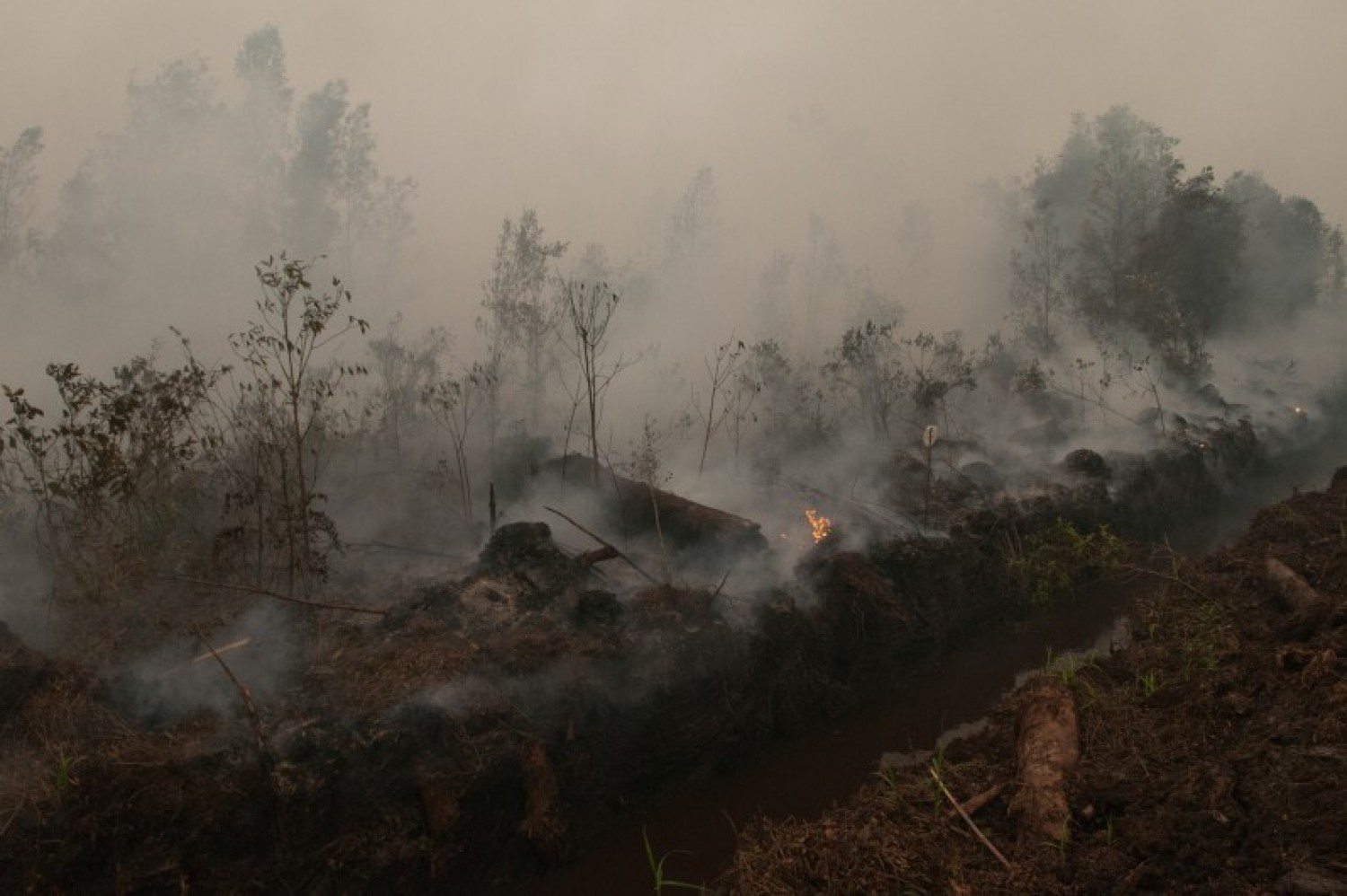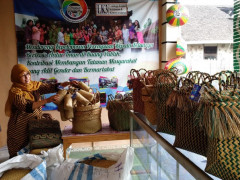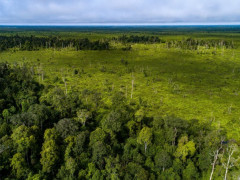Bringing Purun from the Fringe to the Center
By Budi KurniawanAfter the Smoke is Gone, Trauma is Looming
After more than a month of being surrounded by smoke from forest and land fires, at the end of last September, what the Riau people had hoped for in their prayers was answered. The Pekanbaru Meteorology, Climatology, and Geophysics Agency (BMKG) reported that rain had fallen in some areas in Riau with moderate to heavy intensity. Some netizens on social media also uploaded videos of rain with gratitude. Has the smoke gone?
Andi, a resident of Indragiri Hulu, Riau, said the peat still emits thick smoke even though it has been raining. At that time, he was extinguishing the burning peat in Rengat, Indragiri Hulu. It is difficult to extinguish fire on peat with a depth of more than one meter if the rain is not massive and the fire has spread.
The fire was completely extinguished after the fire brigade team worked hard for a full day. The team maximized their efforts to extinguish the remaining fire on land that was already wet from the rain.
After the rain, the air quality has improved. Air Pollution Standard Index PM10 data shows an improvement in air quality status from very dangerous to unhealthy to good. In the first week of October, the air quality is already at a moderate level and occasionally at a good level.
The climate in August-September 2019 was not as bad as the same period in 2015 when El Nino hit. However, efforts to anticipate extreme weather must be carried out considering that a long dry season is predicted to occur in 2020. According to the Head of Agency for the Assessment and Application of Technology (BPPT), Hammam Riza, the drought due to El Nino in 2020 is estimated to be much drier than this year.
Forest and land fires in Riau Province have occurred since the beginning of 2019. Analysis of Pantau Gambut during the forest and land fires season shows that 64% of hotspots were detected on peatlands, so that it was difficult to extinguish the fires. In fact, more hotspots were detected in the January-March and July-September periods than the same periods in 2015, when severe forest and land fires hit Indonesia.
“Living in a land above the clouds” is what the Riau residents sarcastically said about the annual forest fires. They are always haunted by the fear of smoke. At least that's what happened to Yali, a creative worker in Pekanbaru, who is always traumatized when he starts smelling the smoke from burning peatlands.
During the peatland fires in 2015, his son, Dinar, was affected by acute respiratory infection (ARI). At that time he was one year old. And now, in mid-September 2019, Dinar (4.5) and his little sister, Caca (1.5) have been suffering from coughs and colds for two weeks.
"He has mucus and he snores in his sleep. Usually, he doesn’t snore. We gave him nasal drops but they used nebulizer in the hospital,” he said.
Yali said that Dinar was exposed to smoke during his commutes to school which is about 1 kilometer away. At that time, the government had not declared an emergency, so schools weren’t closed even though visibility was getting worse due to the thick smoke. While Caca was exposed to smoke even though she was always indoors. Smoke knows no bounds and can penetrate into the room.
“Dinar left the house to go to school before the government closed the schools. Dinar didn't want to wear a mask because it made him feel stuffy. Caca went to our relative's house. She didn't like being cooped up at home," said Yali.
Although it was too late, the government finally ordered to stop learning activities in schools. So, children like Dinar and Caca should stay at home. Being in the house for weeks made them bored. They have read and colored all books.
"They keep playing on the cellphone, which is bad for their eyes. They have read and colored all books. If there are many children in the neighborhood, they will play football and other games. They won’t listen although their parents forbid them from going out," he said.
When they played outside the house, Dinar and Caca's coughing and shortness of breath got worse. Yali took his children to the hospital because their cough was getting worse and they were vomiting. The doctor diagnosed them with ARI.
They were treated for five hours in the ER and by a specialist doctor who used a nebulizer to give them oxygen. Yali took them home in the afternoon even though the doctor advised that Dinar and Caca should be hospitalized.
“The doctor said it was ARI. The children were still dizzy, like they didn’t get enough oxygen. I needed to pay more if they stayed overnight at the hospital," said Yali.
Pekanbaru is the most populous city in Riau and the residents were exposed to smoke from forest fires in August-September. At least thousands of people were suffering from ARI. The Riau Health Office said that from 1-11 September, 2,135 people were suffering from ARI in Pekanbaru City.
To Yali and hundreds of thousands of Pekanbaru residents, even though the rainy season has arrived and the smoke has dissipated, the trauma of being surrounded by smoke continues to loom. They must prepare for a drier drought in 2020.
“We don’t want to get sick every time there is a fire. I feel sorry for the kids. But what can we do? We have to be ready again to face it," he said.
Afrizal, a climate forecaster at BMKG Pekanbaru, said that even though the rainy season has started, the intensity will decrease from the end of January until February. And the dry season is coming soon.
He told Pantau Gambut that, “The peak of the rainy season is in November. But in the northern part, such as in Rohil and Dumai, the peak is in October. We can’t announce the El Nino condition in 2020 yet because we still need to study the incoming data."




